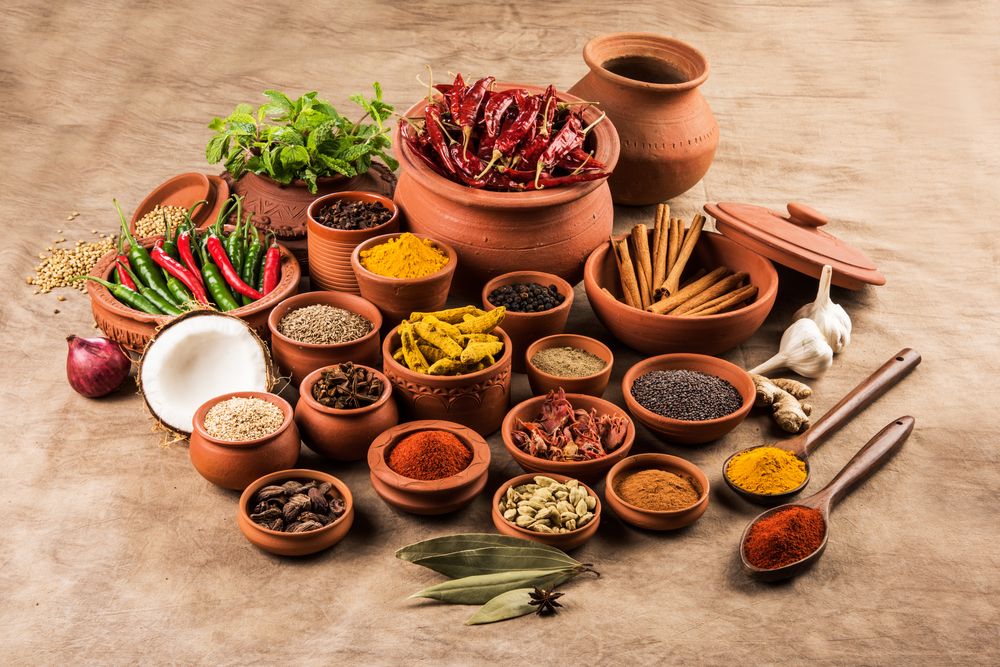India has a long and rich history of being the leading producer and exporter of spices. Our country has provided the world with some of the most exotic and flavorful spices for centuries. Let’s take a deeper look at India’s incredible spice trade.
A Diversity of Spices
India boasts an enormous variety of spices grown across its diverse climate and terrain. From aromatic cloves and cardamom in the Southern hills to pungent ginger and turmeric in the North, no other country can match India’s vast assortment of spices. Some key spices that call India home include:
Cumin (Jeera)
Known for its warm and earthy flavor, cumin is one of the most widely used spices in India. It grows extensively in the states of Rajasthan and Gujarat. Ground cumin adds depth and complexity to many Indian curries and lentil dishes.
Cardamom (Elahi)
The green and black varieties of cardamom are prized for their sweet and floral aromas. Kerala is a major producer of high-quality cardamom, which is used to flavor both savory meals and sweet treats in India. Ground cardamom is a staple of garam masala blends.
Turmeric (Haldi)
This bright yellow root holds pride of place as India’s signature spice. With its slightly bitter, slightly peppery flavor and powerful anti-inflammatory properties, turmeric is ubiquitous in Indian cooking. It is the backbone of most curry powder blends and lends a yellow-orange hue to many rice and vegetable preparations.
Chilies (Mirch)
Indian cuisine simply wouldn’t be the same without the explosion of heat from fresh green and dried red chilies. Varieties like Byadgi, Kashmiri, and Bird’s Eye chilies hail from different regions and add marked differences in pungency and flavor profiles to dishes. Ground red chili powder enlivens everything from dals to potato curries.
The Journey of Indian Spices
India’s spice trade with Europe, the Middle East and Asia goes back thousands of years. While pepper was the original luxury spice, during medieval times cloves, nutmeg and cinnamon became highly coveted commodities from India. This led to increased maritime presence of Arab, Portuguese, Dutch and British traders along Indian coasts and the formation of trading outposts. Some highlights:
– Arab traders sourced spices from ports like Calicut and pepper from Shimoga as early as 3000 BC to transport over land and sea routes to Roman and Persian empires.
– Vasco da Gama’s arrival in Calicut in 1498 marked the start of European colonialism in India and the ascendancy of Portuguese power over Western Asian spice trade. They established the first European factory in Cochin.
– The Dutch ousted the Portuguese in the early 1600s through deft trade deals and military might. They set up headquarters including the massive Dutch Fort Kochi which still stands today.
– The British eventually triumphed over competition and laid the foundations of the British Empire in India through aggressive mercantilism of Indian spices in the 18th century. Key ports like Bombay, Madras and Calcutta grew into mighty cities under their rule.
While political control over India has passed, the romance of Indian spices lives on globally. Their flavors and aromas continue to delight palates worldwide, in both traditional and novel fusion cuisines. Indian spice growing and exports also remain a vibrant part of our economy, reminding us of our culinary heritage and influence across cultures.
Health Benefits of Indian Spices
Beyond flavor, Indian spices offer substantial medicinal attributes that explain their usage in Ayurveda and other traditional medicinal systems. Modern science has shed light on their disease-fighting properties as well:
Turmeric – Contains powerful anti-inflammatory compound curcumin, showing promise against conditions like arthritis. Studied for roles in cancer prevention and treatment.
Ginger – Soothing gingerol content makes it a digestive aid and relief for nausea, colds, and joint pain. May inhibit cancer cell growth.
Garlic – Compounds like allicin are antibacterial, antifungal, and may lower cholesterol levels and blood pressure. Some evidence for protection against certain cancers.
Fenugreek – Mucilage content helps regulate blood sugar levels and showed potential to treat diabetes. Useful for lactation, may relieve symptoms of menopause.
Cumin – Carminative effects on the gastrointestinal tract. Animal research indicates it could protect the liver from toxins and help in fat metabolism.
With their medicinal qualities backed by research today, spices are an integral part of an Ayurvedic lifestyle. Their regular use promotes a balanced metabolism and overall well-being according to ancient Indian texts, now validated by modern findings as well.
A Bright Future for India’s Spice Trade
While international commodity markets and monsoon changes pose challenges to production, the future prospects of India’s spice industry look strong. With rising health awareness worldwide and growing demand for organic and specialty items, high-quality Indian spices command a premium. Processing and value addition using technology along with the promotion of geographical indication tags have boosted farmer incomes and exports. India’s diverse local cuisines garner global interest, celebrated by renowned chefs globally. This increases visibility and drives curiosity about native Indian herbs and seasoning blends. With sustained investments in agriculture and branding, India’s premier position as the home of exotic spices will only grow in the coming decades. Cumin, turmeric, cardamom and chili peppers will keep seasoning dishes – and India’s economy – for many more centuries ahead.



